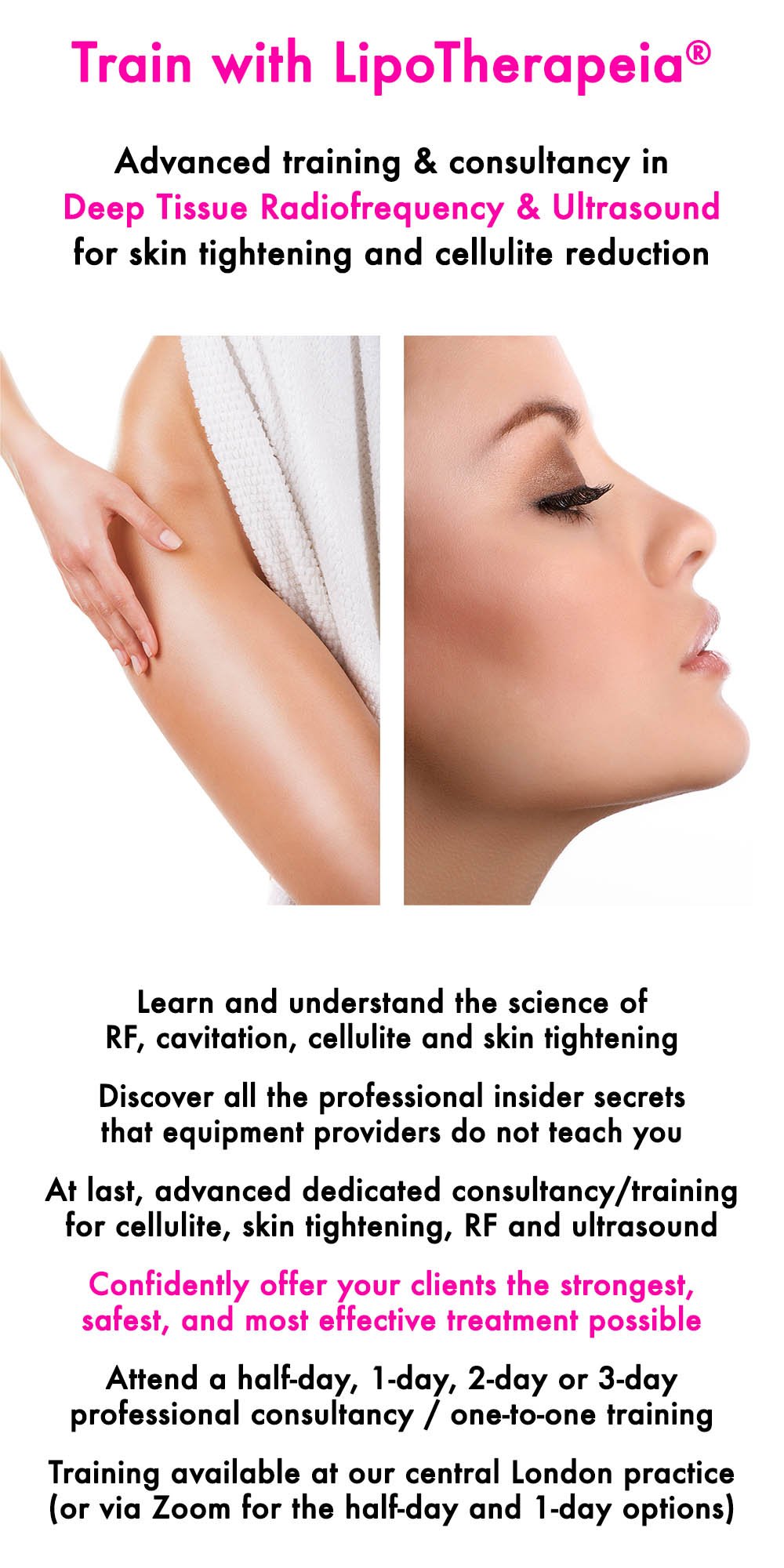Guarana, caffeine, cellulite and your skin
Our Beachy Legs articles are a nice way to share our experience and knowledge in cellulite and skin tightening, from our London clinic with everyone in the world. Check all our articles here. And if you do live in London, book an assessment, consultation or treatment with us here.
Guarana is a source of caffeine
Guarana and caffeine at low doses are irrelevant to cellulite and at high doses detrimental
Guarana in cellulite creams: a marketing gimmick
Guarana: no help for cellulite, either in a cream or as a tea / supplement
Check our professional consultancy in radiofrequency, ultrasound cavitation, cellulite and skin tightening
Guarana is a source of caffeine
Guarana (Paullinia cupana) is a South American plant whose seeds, the size of coffee beans, contain caffeine. The concentration of caffeine is about 4x that of coffee beans (1, 2). Drinks made with guarana seeds are popular in Brazil.
Many commercial “energy drinks” contain guarana and these drinks, in terms of caffeine, are no different to drinks containing caffeine from coffee beans.
For most of the population, caffeine ingestion up to 300-400mg per day (i.e. caffeine from 3-4 cups of coffee or similar amount from energy drinks / guarana supplements) is not a problem for general health or cellulite.
For people sensitive to caffeine, however, too much guarana, coffee or high caffeine tea, such as matcha tea, is not recommended.
Guarana and caffeine at low doses are irrelevant to cellulite and at high doses detrimental
This oral ingestion of caffeine (<400mg/day) neither causes nor reduces cellulite, when taken orally.
Larger amounts of caffeine, from guarana, coffee, tea or other sources (e.g. 1,000mg/day, equivalent to 10 cups of coffee a day), are unhealthy and can indeed play a role in cellulite development, due to adrenal exhaustion and dehydration (with consequent water retention if caffeine intake is discontinued).
Guarana in cellulite creams: a marketing gimmick
Caffeine is indeed helpful in reducing cellulite when used topically, due to its lipolytic action, via PDE 3/4 inhibition (this effect is irrelevant when caffeine taken orally).
Therefore guarana extract, one would assume, would be useful as an active ingredient in anti-cellulite creams.
However, guarana extracts in cosmetics contain anything between 1-20% of caffeine. As a 20% guarana extract is brown and has a heavy odour, it cannot be incorporated into a cream in high enough amounts to make a difference with cellulite.
For this reason, most so called anti-cellulite / “bum-bum” creams, contain a 20% guarana extract at less than 1% concentration, i.e. 0.2% caffeine content in the final cream, which is absolutely pointless for cellulite / topical fat reduction.
At least 3-5% of non liposomal caffeine or 2-3% of liposomal caffeine is needed for good results, ideally in combination with other anti-cellulite actives. Using anything less in a cream is deceiving the consumer.
There is no cellulite cream on the market with 15% guarana in it, which would provide a minimum of 3% caffeine - that would be a dark brown mess, impossible to absorb and unsuitable for skin application.
It just makes much more sense to use 2-3% liposomal caffeine, which is white and absorbs fast.
Guarana: no help for cellulite, either in a cream or as a tea / supplement
So, no, guarana won’t help with cellulite reduction in any either oral or topical form and it will make cellulite worse at guarana oral intakes equivalent to <400mg of caffeine per day.
Check our professional consultancy in radiofrequency, ultrasound cavitation, cellulite and skin tightening
Do you want to deeply understand radiofrequency, ultrasound cavitation, cellulite and skin tightening? Attend a half-day, 1-day or 2-day or 3-day professional consultancy / one-to-one masterclass and confidently offer your clients the safest, strongest and most effective treatment possible. Service available via Zoom or at our central London practice.




![How to get rid of cellulite | 111 tips from the experts [2024 update]](https://images.squarespace-cdn.com/content/v1/5294cad9e4b009e918124a61/1582205124442-U31A5ECGNCG62VFPPJWJ/How+to+get+rid+of+cellulite+in+2020.jpg)


